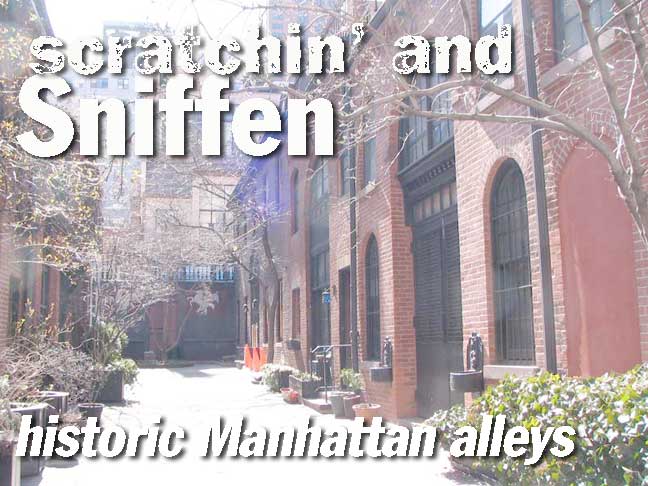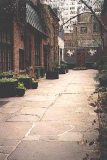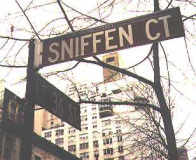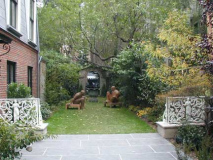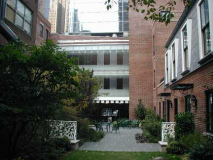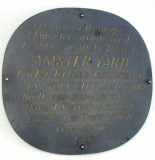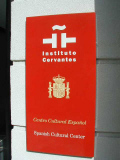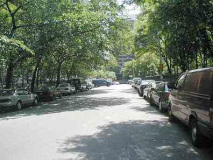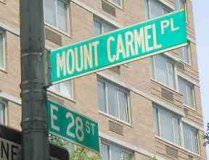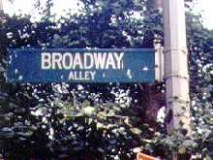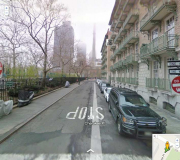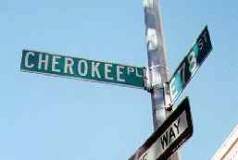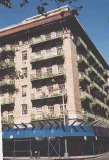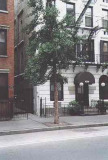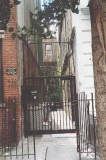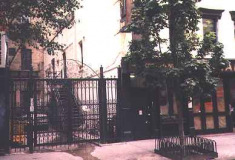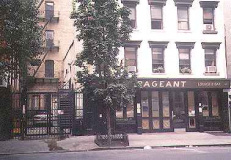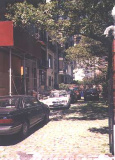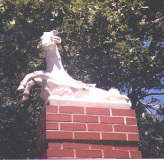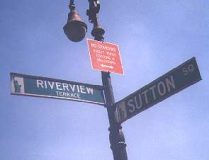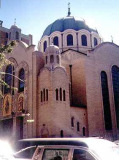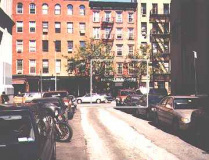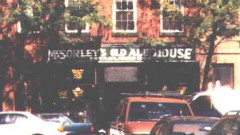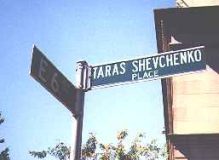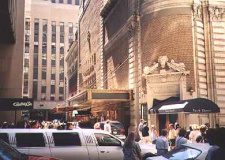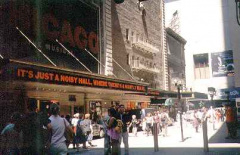Nestled in prosperous Murray Hill on East 36th Street between 3rd and Lexington is one of the few alleys of the midtown area. Sniffen Court was constructed between 1850 and 1860 and consists of ten handsome brick carriage houses protected behind a locked iron gate.
The carriage houses were built by architect John Sniffen and were originally used as stables until the 1920s, when they were converted into living spaces.
The rear wall features plaques of horsemen created by artist Malvina Hoffman, who lived in Sniffen Court for over forty years.
Sniffen Court used to be the home of The Sniffen Court Dramatic Society, an amateur theater group that performed plays in a theater located in the court.
Check out the cover of the Doors’ Strange Days. It was shot in Sniffen Court. I can’t show it here because I don’t want to get sued!
Andrew Cusack visits Sniffen Court
Sure, it might LOOK like a gated building front on East 49th Street between 2nd and 3rd Avenues, but this between buildings passageway, now known as Amster Yard, goes all the way back to 1830 or earlier. On this site, the stagecoach to Boston began its route on a now-vanished road called the Eastern Post Road. Later in the century, tenements were built, and an alley between them was gradually covered with refuse until James Amster Associates, a design firm, took it over and remodeled it in the mid 1940s. Amster himself lived on the property until his death in the 1980s.
Check this page for more on Amster Yard.
Spanish Cultural Center Instituto Cervantes acquired the property and immediately discovered that it had become unfit for habitation. They razed the building and rebuilt it from scratch, but also rebuilt Amster Yard along its old route and added an art gallery. The complex is to remain open to the public so that all New Yorkers can enjoy the heretofore hidden cul-de-sac.
Sculptor Isamu Noguchi worked in the charming Amster Yard back garden. (A visit to the Noguchi Sculpture Garden in Astoria is recommended.)
Amster Yard was landmarked in 1966, which made its reconstruction imperative.
Mount Carmel Place, named for a vanished church, is between East 26th and 28th Streets west of 1st Avenue and Bellevue Hospital. It was likely constructed in the 1970s when Mt, Carmel Church was still there. Mt. Carmel Place does not appear on a single map I have of New York City!
Broadway Alley is Manhattan’s last unpaved street. Between East 26th and East 27th Streets just west of Third Avenue, it is nearly five blocks east of its much longer namesake.
Broadway Alley does have a distinctive bracketed wall lamp on the building adjoining 26th Street.
Local concerns have taken over Broadway Alley for parking and it is fenced off more often than not.
According to the New York Times it was laid out by Charles Lee and Adam Thomson sometime around 1830. It was named Broadway Alley even though Broadway is nowhere near it possibly to give it a theatrical aura. An 1879 Times article describes it thusly:
“On the one hand,” the reporter wrote, “are stables with ragged stable boys lying in the sun and enjoying more odors at a breath than Coleridge found in Cologne. On the other is a broken and blistered and dingy and half-windowless row of tenement houses with dusky African faces grinning from every pane.”
It is known that the Barnum & Bailey Circus once kept elephants in the alley. There is one remaining private residence: #8 Broadway Alley.
As far as I can discern, Cherokee Place, which runs between East 77th and East 78th Streets near the FDR Drive, is one of two streets in Manhattan that have anything to do with Native Americans, Indian Road in Inwood Hill being the other.
Your webmaster had always been under the impression that Cherokee Place was a creature of the FDR Drive, but I’ve learned that the short alley has been here since 1913. It was named for the Cherokee Club, an uptown headquarters of the powerful Democratic Party organization, Tammany Hall (itself named for an Indian chief). As it happens, the Cherokee Club is still there, now as an apartment building.
But, what truly dominates Cherokee Place, and has since 1909, is the former Shively Sanitary Tenements (now Cherokee Apartments) with balconies facing the river .
Before today’s tuberculosis treatments, it was thought that the best way to treat ‘consumption’ was with plenty of light and air. The Shively Tenements were built with that thought in mind.
What you can’t see from the outside are the exterior staircases in the inner courtyard that allow entrance and egress.
Here’s a real Forgotten NY find. It’s a nameless alley between 422 and 424 West 46th Street, east of 10th Avenue. For want of a better name, we’ll call it Clinton Court, after the apartments at 422. It has a gate that, naturally, Your Webmaster doesn’t have a key to. I wish I did.
Because…behind that locked gate stands a house, 422 1/2 West 46th Street. It stands in an ancient courtyard and is an old stable with a stone staircase and a wrought iron porch. Most likely the building was built between 1800 and 1820.
When the stable was built all those years ago, what became West 46th Street was open country. A creek known as Widow’s or Great Kills Creek gurgled nearby. I don’t know if it was a forest, an open field or a farm, but in the 1840s and 1850s, when the east-west streets were cut through, the little house survived. The area was first called Clinton, then Hell’s Kitchen for a century or two, and now Clinton is coming back into vogue. In the 1950s, there were rumblings that the house was haunted. But I saw no ghosts as I stared through the locked gate.
This is another gated alley you wouldn’t think twice about if you weren’t looking for it. Tucked on the stretch of East 9th Street between 3rd and 4th Avenues known as Wanamaker Place after the grand department store that used to be there, Lafayette Place is more noted for what used to be next to it than what it ever was, if that makes any sense.
See the ‘Pageant Lounge & Bar‘ next to the alley? It used to be called Pageant Books, and Your Webmaster was to be found frequently scouring its stacks for ancient NYC maps and prints. Aisle after aisle of dusty tomes awaited book hawks. It was among the last remaining shops of Booksellers Row, on 4th Avenue between Cooper and Union Squares. Except for the Strand*, they’re all gone. The Pageant made a go of it on Houston Street for awhile but that’s gone too, and the Pageant now exists as an online entity. It also opened up a small space on East 4th Street a few years ago.
Riverview Terrace, where East 58th Street (Sutton Square) meets the East River east of Sutton Place, is paved with red brick and is lined with gorgeous, but expensive, townhouses, which have a terrific view of the river but also of the 59th Street Bridge.
The terrace also boasted one of NYC’s few “Type F “castiron streetlamp poles. Or it used to. The pole was taken down in 2001 and a newer ‘retro-crook’ designed to look like the classic bishop crook poles of the past was installed in its place.
While many obscure New York alleys are nondescript and forgettable (except fro the information they provide about what NYC was like in the past) Riverview Terrace is the exception.
Stone goats overlook Riverview. Scaffolding casts a shadow over the beautiful East River lookout.
Stable Court, behind the fence, runs along a Cooper Square building
Stable Court is one of those “only-on-maps” streets. Many maps show Stable Court on the west side of Cooper Square just north of East 4th Street.
No court is immediately apparent. But…
…a driveway alongside the brick building that harbors the Village Voice offices goes west, then north, just like the maps say Stable Court does. So, maybe Stable Court isn’t just fiction after all.
[2011: the construction of a new building on the corner of the Bowery and East 4th has left a paper-thin space in place of Stable Court]
Just south of Stable Court, or where it’s supposed to be, stands the Old Merchant’s House Museum, in which a colonial-era town house owned and occupied by the Tredwell family for centuries is maintained in the style of the 19th Century. It’s certainly worth a visit for a glimpse into ‘Olde New Yorke’
Taras Shevchenko was a revered 19th century Ukrainian writer, artist and political activist. The East Village near Cooper square has long been a Russian/Ukrainian enclave.
Looking down Shevchenko Place from East 6th Street, you can see a real Old New York institution.
According to legend, there has been a tavern here in this location since 1854, though recent research has indicated that date might be incorrect by a few years. Famed New Yorker writer Joseph Mitchell immortalized McSorley’s Old Ale House in an article in the New Yorker, “The Old House At Home,” collected in the 1993 collectionUp In The Old Hotel.
Within, McSorley’s still looks much as it did in the late 19th Century.
Surprisingly, Shevchenko Place is rich in architectural and historical buildings.
While St. George’s Ukrainian Church, at Shevchenko and East 7th Street, looks ancient…it’s only just over 20 years old. It was finished in 1977.
The Shubert Theatre currently (spring 2002) hosts the Bob Fosse musical Chicago.
[Chicago is still razzle-dazzling audiences in 2011]
Shubert Alley, between West 44th and 45th Streets west of Times Square, abuts the Shubert and Booth Theatres in the hear t of the Theatre District.
Named for the famed Shubert Theatre family, sons of Jewish immigrants from East Prussia, it’s aswarm with theatergoers on matinee day, so it’s hardly Forgotten, but it does seem to be forgotten by NYC mapmakers, who don’t list it because it’s a private right of way.
Sources:
Landmarks of New York III, Barbaralee Diamonstein, Harry N. Abrams, 1998
Encyclopedia of New York City, ed. Kenneth T. Jackson, Yale University Press, 1995
The Street Book, Henry Moscow, Hagstrom 1978
Up In The Old Hotel, Joseph Mitchell, Vintage Books 1993
“On a Manhattan Byway, Feeling Dirt Beneath Feet”, Alan Feuer, New York Times, November 27, 2005
Comments? Corrections? Email me at erpietri@earthlink.net. Thanks for visiting the site!

